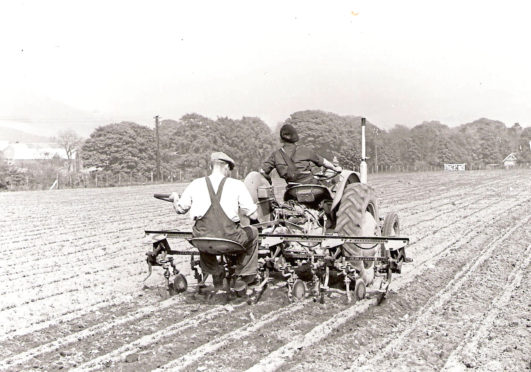After a gap of almost 50 years, sugar beet is once again being grown north of the border as farmers seek to find the ideal crop for their on-farm anaerobic digestion plants.
The crop was first grown to supply the only purpose-built sugar beet factory in Scotland, which opened at Cupar in Fife in 1926. Constructed by the Anglo Scottish Sugar Company, the factory was a copy of their plant at Colwick in Nottingham-shire.
The site at Cupar, now a trading estate, was chosen because the large amounts of water needed in the factory process could be supplied by the adjacent River Eden.
The other major factor was the adjoining main east coast railway line which was vital for supplying the beet and shipping the processed sugar out.
Fife was also in the centre of Scotland’s east coast arable regions and a major beet-growing county along with Angus, Perthshire and the Lothians. Beet also came from as far south as Northumberland and the Moray coast in the north.
This was to be a major weakness in the factory’s economy as the owners paid for the carriage of the beet. This was against the backdrop of English factories’ being able to secure enough tonnage from within a short distance of their gates.
The factory at Cupar had to fight from the start to get enough tonnage to justify its existence.
For the farmers who were willing to give the crop a try, new techniques had to be learned as initially they had grown the crop as they would grow turnips. Specialist fieldsmen advised that the crop should be grown on the flat as opposed to drills.
In fact, it was the all-important turnip crop so vital for feeding the livestock carried by virtually all farms in Scotland which held back the spread of sugar beet. Farmers felt the extra work of singling and hoeing sugar beet could not be carried out alongside similar tasks among their turnip crops.
Another reason was the shorter growing season and the pressure to get potatoes gathered in the autumn, which could often see wet weather hamper field operations.
Scotland’s longer daylight did lead to higher sugar contents among the samples taken at the factory weighbridge, although this was offset by lower yields.
One plus was that the tops proved to be a great feed for cattle and sheep.
Sugar beet pulp – an excellent feed source and byproduct of the process – was offered to growers at advantageous rates.
Another bonus was that the lime used in the factory process could be spread on fields to control pH levels.
However, many farmers did not like the strict controls of acreage quota and factory intake contracts as the factory dictated when each farmer’s crop could be taken in for processing.
Strict sampling to decide the quality of each load and price paid led to surreptitiously placed “gifts” in the loads to persuade the samplers.
The Second World War provided a much-needed impetus to the factory with War Agricultural Executive Committees directing farmers to grow the crop.
Outwith the seasonal campaign, the factory processed potatoes into a dried food product on the insistence of Winston Churchill.
After the war, the rise in mechanisation helped the growing operations on the farm while the need for labour saw the factory recruit from the Isle of Lewis each season.
Continued machinery developments, chemical weed control and monogerm seed helped make the crop more attractive but it was still struggling to reach a satisfactory tonnage.
The need for a large modernisation led the owner, by this time the British Sugar Corporation, to close the factory which sliced its last beet in January 1972 after a fight by the Scottish NFU.
Fife Farming Heritage Show at Cupar tomorrow will have a display on the sugar beet crop and factory and its successors peas and vegetables along with, a very extensive Farming in the Second World War display.
